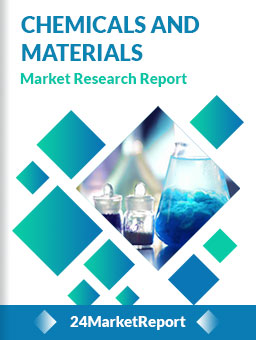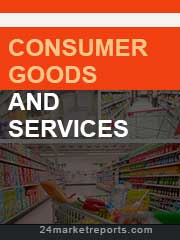
Download FREE Report Sample
Download Free sampleMARKET INSIGHTS
Global art paints market was valued at USD 3,128 million in 2024 and is projected to reach USD 10,320 million by 2032, exhibiting a compound annual growth rate (CAGR) of 19.1% during the forecast period. This significant expansion reflects increasing demand across residential and commercial applications worldwide.
Art paints comprise specialized coatings designed for decorative and protective applications, available in various formulations including water-based, solvent-based, and specialty paints. Water-based paints currently dominate the market with a 78% share, driven by their low VOC content and environmental benefits, while solvent-based variants account for 10% of sales. These products are essential for enhancing aesthetics and durability across diverse surfaces in both indoor and outdoor settings.
The market growth is fueled by rising construction activities, growing DIY culture, and increasing consumer spending on home improvement projects. Geographically, Europe leads with 32% market share, followed by North America (28%) and China (24%). Key applications include residential spaces (45% share) and hospitality sectors like hotels and spas (16%). Major players including KABEL, Nippon Paint, and 3 Trees Group are expanding their product portfolios and distribution networks to capitalize on these emerging opportunities in the decorative coatings segment.
Rising Consumer Interest in Home Decor and Artistic Expression to Fuel Market Expansion
The global art paints market is experiencing robust growth driven by increasing consumer spending on home decor and creative arts. With interior design trends emphasizing personalized spaces, the demand for artistic wall finishes and decorative paints has surged significantly. Water-based paints, accounting for 78% of the market share, dominate due to their low VOC content and ease of application in residential settings. The family segment contributes 45% of total consumption as homeowners increasingly view interior spaces as canvases for self-expression. This cultural shift towards experiential living spaces creates sustained demand for art paints across diverse applications.
Hospitality Industry Investments to Accelerate Premium Product Adoption
To know more about market statistics, Download a FREE Sample copy
The hospitality sector's rapid expansion presents a key growth opportunity, with art paints capturing 16% market share in hotels and spas globally. Luxury establishments are increasingly incorporating artistic wall finishes as differentiating elements, with Europe (32% market share) and North America (28%) leading in premium installations. The segment's CAGR of 19.1% reflects how high-end properties leverage specialized paints for thematic environments. Recent developments include major hotel chains partnering with manufacturers like Nippon Paint for customized color solutions that enhance guest experiences while meeting stringent durability requirements.
Technological advancements in paint formulations further stimulate market growth through improved performance characteristics:
➤ Leading manufacturers have introduced antibacterial art paints with 99% microbial reduction rates, becoming mandatory for healthcare-adjacent hospitality spaces post-pandemic.
Furthermore, the commercial sector's gradual shift from conventional wall coverings to artistic finishes in offices (15% segment share) and F&B outlets demonstrates expanding application horizons that will continue driving market expansion through 2032.
Raw Material Price Volatility to Challenge Profit Margins
While the art paints market shows promising growth, manufacturers face significant pressure from fluctuating raw material costs. Key components including titanium dioxide and acrylic emulsions have seen price increases of 18-22% since 2022, directly impacting production economics. The Europe-China supply chain corridor (representing 56% of global trade flow) remains particularly susceptible to logistic disruptions, causing inventory challenges for mid-sized producers. This volatility makes pricing strategies increasingly complex in a market where the top six manufacturers hold just 10% collective share, limiting economies of scale for most players.
Regulatory Compliance Burdens to Hinder Market Penetration
Stringent environmental regulations present another formidable challenge, particularly for solvent-based formulations which account for 10% of the market. Recent updates to VOC emission standards across North America and Europe require reformulation investments that can exceed $2 million per product line. Many regional manufacturers lack the R&D capabilities to adapt quickly, creating barriers to entry in developed markets. The regulatory landscape continues evolving, with water-based products now facing scrutiny over microplastic content - a development that may require additional filtration technologies in manufacturing processes.
Emerging Markets to Offer Untapped Growth Potential
Southeast Asia and Middle East regions present significant growth opportunities, currently representing less than 8% of global art paint consumption despite rapid urbanization. Countries like Vietnam and UAE show 27% year-on-year demand growth for premium decorative finishes as disposable incomes rise. Market leaders including CARPOLY and 3 Trees Group have initiated local production facilities to capitalize on this potential, with China's art paint exports to ASEAN nations growing at 15% annually. The tropical climate in these regions specifically drives demand for mold-resistant formulations - a niche that innovative manufacturers are actively addressing through specialized product lines.
Technological Integration to Create New Value Propositions
Digital integration presents another lucrative avenue, with augmented reality color visualization tools increasing conversion rates by 40% in retail settings. Major players are investing in AI-driven custom color matching systems that allow professional designers to replicate historical finishes with 98% accuracy. The commercial segment particularly benefits from these advancements, where 72% of specifiers now demand digital proofing capabilities before project approval. Additionally, smart paints with temperature-regulating properties are gaining traction in luxury hospitality projects, commanding 30-35% price premiums over conventional products.
Skilled Labor Shortage to Impact Quality Standards
The industry faces mounting challenges in maintaining application quality standards due to a global shortage of trained decorative painters. In key markets like North America, 43% of painting contractors report difficulties finding artisans capable of advanced faux finishes - a skills gap that limits adoption of premium art paint products. The problem intensifies as traditional techniques become endangered crafts, with vocational training programs failing to keep pace with market needs. This bottleneck threatens to constrain the luxury segment's growth despite strong product innovation.
Additional Industry Challenges
Warehousing Complexities
The specialized nature of art paints creates logistical hurdles, with most formulations requiring climate-controlled storage that adds 12-15% to distribution costs. This proves particularly challenging for the 68% of manufacturers operating through third-party logistics networks.
Counterfeit Products
Premium brand imitation remains rampant in developing markets, where counterfeit products capture an estimated 18-22% of apparent demand. The problem erodes both revenue and brand equity, with knockoffs often containing hazardous substitutes that compromise safety standards.
Water-based Paints Dominate Due to Eco-Friendly Properties and Low VOC Emissions
The market is segmented based on type into:
Water-based Paints
Subtypes: Acrylic, Latex, and others
Solvent-based Paints
Subtypes: Alkyd, Enamel, and others
Others
Including specialty formulations like metallic or textured paints
Residential Segment Leads with High Demand for Home Decoration and DIY Projects
The market is segmented based on application into:
Residential
Commercial
Hospitality
Food Service
Others
Professional Painters Segment Shows Significant Growth Due to Rising Renovation Activities
The market is segmented based on end user into:
DIY Consumers
Professional Painters
Artists
Industrial Users
Innovation and Sustainability Drive Competition in the Art Paints Market
The global art paints market features a diverse competitive landscape with established multinational corporations and emerging regional players vying for market share. Nippon Paint currently leads the segment, accounting for approximately 3.2% of the total market share in 2024. Their dominance stems from extensive distribution networks across Asia-Pacific and Europe, coupled with a strong portfolio of both water-based and specialty paints.
KABEL and Carpoly follow closely, leveraging their expertise in eco-friendly formulations to capture the growing demand for sustainable art materials. These companies have significantly invested in R&D to develop low-VOC and bio-based paints, with Carpoly recently launching a breakthrough algae-derived pigment line that reduced carbon emissions by 32% in production.
The market remains dynamic as mid-tier players like FEMA and COLDEC adopt aggressive regional expansion strategies. FEMA's recent acquisition of a German specialty paint manufacturer strengthened its position in the European hotel refurbishment sector, which accounts for 16% of art paint applications. Meanwhile, COLDEC's focus on premium-textured finishes for commercial spaces has yielded a 14% year-over-year growth in restaurant and cafe projects.
Chinese manufacturer 3 Trees Group represents the fastest-growing competitor, having doubled its exports to North America since 2022 through strategic partnerships with major art supply retailers. Their competitively priced water-based acrylics now capture 2.1% of the family-use segment, capitalizing on the DIY home decor trend.
Nippon Paint (Japan)
KABEL (Germany)
Carpoly (China)
FEMA (Italy)
COLDEC (France)
3 Trees Group (China)
Benjamin Moore & Co. (U.S.)
Berger Paints (India)
Asian Paints (India)
The global art paints market is experiencing a significant paradigm shift with water-based paints capturing 78% market share in 2024. This dominance is driven by stricter environmental regulations and growing consumer preference for low-VOC (volatile organic compounds) products. Unlike traditional solvent-based paints, which account for only 10% of the market, water-based variants offer safer application and reduced environmental impact. Innovations in acrylic emulsion technology have further enhanced durability and drying times, making them preferable for both professional artists and DIY enthusiasts. Additionally, major manufacturers are investing in bio-based binders, which could redefine sustainability benchmarks in the industry by 2030.
Premiumization in Residential and Hospitality Sectors
The home decor and hospitality industries collectively drive 61% of art paint demand, with families accounting for 45% and hotels/spas representing 16% of applications. Increasing disposable incomes and the post-pandemic focus on aesthetically pleasing interiors have accelerated premium product adoption. For instance, textured and metallic finishes are gaining traction in luxury hotels, while customizable color-matching systems are being widely adopted for residential projects. This trend aligns with the market’s projected growth to $10.32 billion by 2032, reflecting a 19.1% CAGR.
Breakthroughs in nanotechnology are enabling next-generation art paints with self-cleaning and antimicrobial properties. These innovations cater to healthcare and hospitality sectors, where hygiene and longevity are critical. Furthermore, smart paints with temperature-regulating capabilities are emerging, particularly in Europe and North America, which hold 32% and 28% market shares, respectively. Manufacturers like Nippon Paint and 3 Trees Group are also integrating AI-driven color recommendation tools, streamlining the selection process for commercial buyers. Such advancements, coupled with rising R&D investments in China (holding 24% of the global market), underscore the industry’s push toward multifunctional solutions.
North America
The North American art paints market, accounting for 28% of global sales, is driven by strong demand from professional artists, DIY enthusiasts, and commercial applications. Stringent environmental regulations like the California Air Resources Board (CARB) standards have accelerated the shift toward water-based formulations, which now represent over 82% of regional sales. Major brands like Golden Artist Colors and Liquitex dominate the premium segment, while growing interest in texture mediums and metallic finishes reflects evolving artistic trends. However, higher production costs compared to Asia-Pacific suppliers create pricing pressure, particularly in the student-grade paint category.
Europe
As the largest regional market (32% global share), Europe benefits from centuries-old artistic traditions and robust art education systems. The implementation of EU Ecolabel standards has made solvent-based paints commercially nonviable in most Western European countries, pushing manufacturers like Schmincke and Winsor & Newton to develop high-performance acrylic alternatives. Germany and France collectively account for 45% of regional consumption, with growing demand for lightfast pigments and archival-quality materials. Brexit-related trade complexities continue to impact UK-based manufacturers' supply chains, though the region maintains its reputation for premium artist-grade products.
Asia-Pacific
While China holds 24% of the global market, the wider APAC region demonstrates stark contrasts between professional and entry-level segments. Japanese brands like Holbein command premium prices for their gouache and watercolor lines, whereas mass-market manufacturers in India prioritize affordability over archival quality. The emergence of urban art collectives and government-sponsored creative hubs in Southeast Asia has doubled specialty paint demand since 2019. However, inconsistent raw material quality and counterfeit products pose challenges for international brands expanding in this region, despite its 19% annual growth rate - the highest worldwide.
South America
Brazil's vibrant street art culture and Argentina's academic painting tradition drive this emerging market, though economic instability frequently disrupts supply chains. Local manufacturers like Acrilex dominate through affordable acrylic ranges, while imported oil paints maintain prestige among professional studios. The lack of standardized pigment rating systems and frequent currency fluctuations create a two-tier market, where 60% of sales comprise student-grade products. Recent trade agreements with European suppliers are gradually improving access to higher-quality materials, particularly in Chile and Colombia.
Middle East & Africa
This region shows untapped potential, with UAE and South Africa serving as key distribution hubs. While religious restrictions on figurative art persist in some markets, the growing contemporary art scene in Dubai and Lagos has increased demand for professional-grade materials. Import dependency (over 90% of products) and extreme climate conditions that affect paint stability remain significant barriers. Nevertheless, new art biennales and museum projects across the GCC countries are stimulating market growth, with projected CAGR of 12% through 2030 - the second highest globally after Asia-Pacific.
This market research report offers a holistic overview of global and regional markets for the forecast period 2025–2032. It presents accurate and actionable insights based on a blend of primary and secondary research.
✅ Market Overview
Global and regional market size (historical & forecast)
Growth trends and value/volume projections
✅ Segmentation Analysis
By product type or category
By application or usage area
By end-user industry
By distribution channel (if applicable)
✅ Regional Insights
North America, Europe, Asia-Pacific, Latin America, Middle East & Africa
Country-level data for key markets
✅ Competitive Landscape
Company profiles and market share analysis
Key strategies: M&A, partnerships, expansions
Product portfolio and pricing strategies
✅ Technology & Innovation
Emerging technologies and R&D trends
Automation, digitalization, sustainability initiatives
Impact of AI, IoT, or other disruptors (where applicable)
✅ Market Dynamics
Key drivers supporting market growth
Restraints and potential risk factors
Supply chain trends and challenges
✅ Opportunities & Recommendations
High-growth segments
Investment hotspots
Strategic suggestions for stakeholders
✅ Stakeholder Insights
Target audience includes manufacturers, suppliers, distributors, investors, regulators, and policymakers
-> Key players include KABEL, FEMA, CARPOLY, Nippon Paint, COLDEC, and 3 Trees Group, with the top 6 manufacturers accounting for about 10% of market share.
-> Key growth drivers include rising demand for decorative paints, increasing urbanization, and growing hospitality sector investments.
-> Europe leads with 32% market share, followed by North America (28%) and China (24%).
-> Emerging trends include eco-friendly water-based paints (78% share), digital color matching technologies, and antimicrobial paint solutions.
-> The family segment dominates with 45% share, followed by hotel and spa applications at 16%.

Speak to our Custom Research Team and get the Custom Research in a budget
Custom ResearchFrequently Asked Questions ?
A license granted to one user. Rules or conditions might be applied for e.g. the use of electric files (PDFs) or printings, depending on product.
A license granted to multiple users.
A license granted to a single business site/establishment.
A license granted to all employees within organisation access to the product.
Upto Working 24 to 48 hrs
Upto 72 hrs max - Weekends and Public Holidays
Online Payments with PayPal and CCavenue
Wire Transfer/Bank Transfer
Hard Copy




 Industry Market Size
Industry Market Size SWOT Analysis
SWOT Analysis Industry Major Players
Industry Major Players Revenue Forecasts
Revenue Forecasts Historical and Forecast Growth
Historical and Forecast Growth Profitability Analysis
Profitability Analysis
























